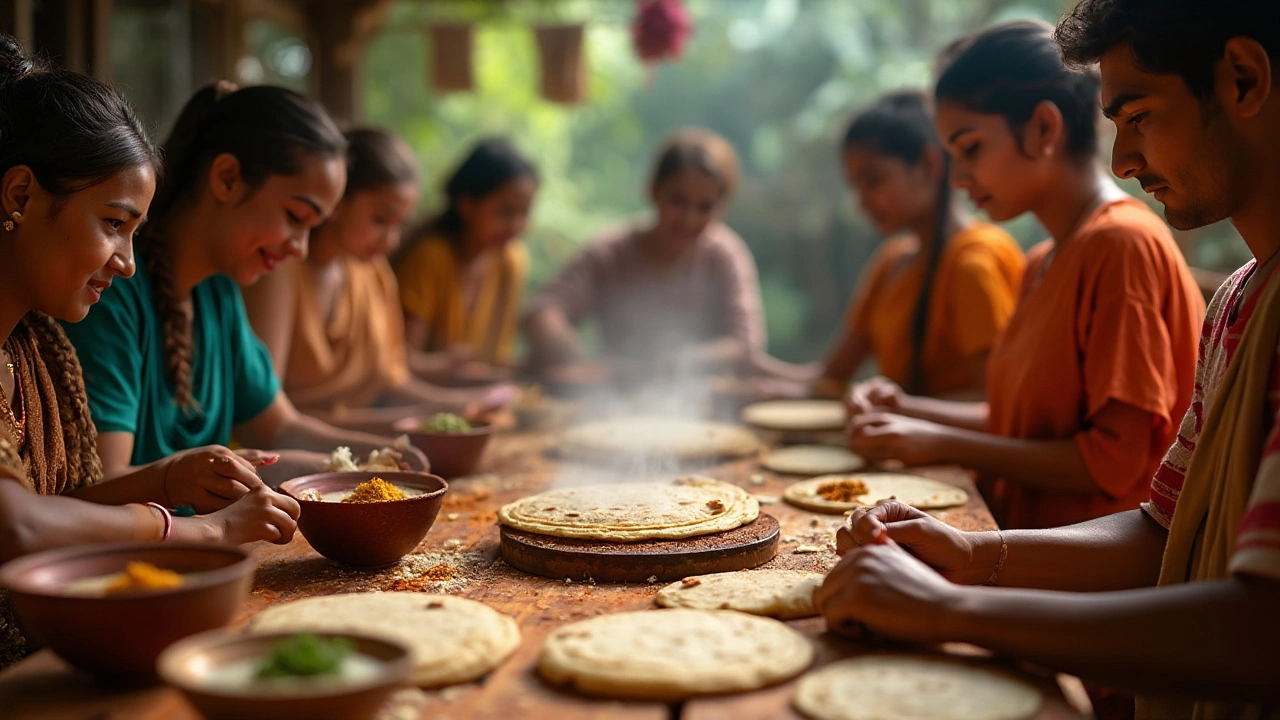Round Roti – Simple Steps for Soft, Perfect Flatbread
Round roti is the everyday Indian flatbread that most families eat with curries, dal, or even a simple pickle. It looks plain, but getting a soft, puffed roti without sticking to the pan takes a few tricks. In this guide you’ll find everything you need – from flour selection to cooking hacks – so you can whip up round roti that feels fresh out of a restaurant.
Choosing the Right Flour
The most common flour for roti is whole‑wheat atta. It has the right gluten level to give elasticity while staying healthy. If you prefer a lighter texture, try a mix of 75% atta and 25% all‑purpose flour. The extra protein in all‑purpose helps the dough stretch without tearing. For gluten‑free fans, millet or sorghum flour can work, but you’ll need a binding agent like psyllium husk to keep the dough from falling apart.
Whatever flour you pick, always sift it before mixing. Sifting removes clumps and lets air into the flour, which makes the dough easier to roll out. A good rule of thumb is one cup of flour to about ¼ cup of water, adjusting a splash at a time until the dough feels soft but not sticky.
Cooking Tips for Fluffy Roti
First, let the dough rest. After kneading for 5‑7 minutes, cover it with a damp cloth and leave it for at least 15 minutes. Rest relaxes the gluten and makes the dough easier to roll thin.
When you roll, aim for a diameter of 6‑7 inches and keep the thickness around 2‑3 mm. Too thick and the roti will stay hard; too thin and it may tear or burn. Dust the rolling surface and the dough with a little extra flour, but don’t over‑flour – excess flour can make the roti dry.
Heat a cast‑iron tawa or heavy non‑stick pan on medium‑high. When a few drops of water sizzle on the surface, it’s ready. Place the rolled roti on the pan, wait for tiny bubbles to appear (about 20‑30 seconds), then flip. Cook the other side until you see golden spots, then press gently with a clean cloth or spatula. The roti should puff up – that’s the sign of steam inside, creating a soft interior.
If the roti doesn’t puff, try a quick trick: after the second side gets some color, press the roti lightly with a cloth while it’s still on the pan. The pressure forces steam to expand, making the roti puff. Serve immediately, brushed with a dab of ghee or butter, to keep it moist.
Round roti pairs well with any Indian dish, but you can also get creative. Try spreading a thin layer of hummus, topping it with fresh herbs, or using it as a wrap for grilled veggies. The possibilities are endless, and the same basic recipe works for each variation.
Now you have the basics: the right flour mix, a rested dough, a hot pan, and a few cooking moves. With a little practice, round roti will become a quick staple in your kitchen, ready to soak up every flavor on your plate.
The Myth of the Perfect Round Roti: Embrace Imperfections in Roti Making
Why do we strive for perfect roundness in rotis, and does it truly matter? As home cooks from different cultural backgrounds explore their culinary heritage, the pursuit of a round roti often overshadows the actual essence of this staple. While the circular shape might carry a certain aesthetic appeal and tradition, the secret to a good roti lies more in its texture and taste. Many practical tips can help you create delicious rotis, regardless of their form.
